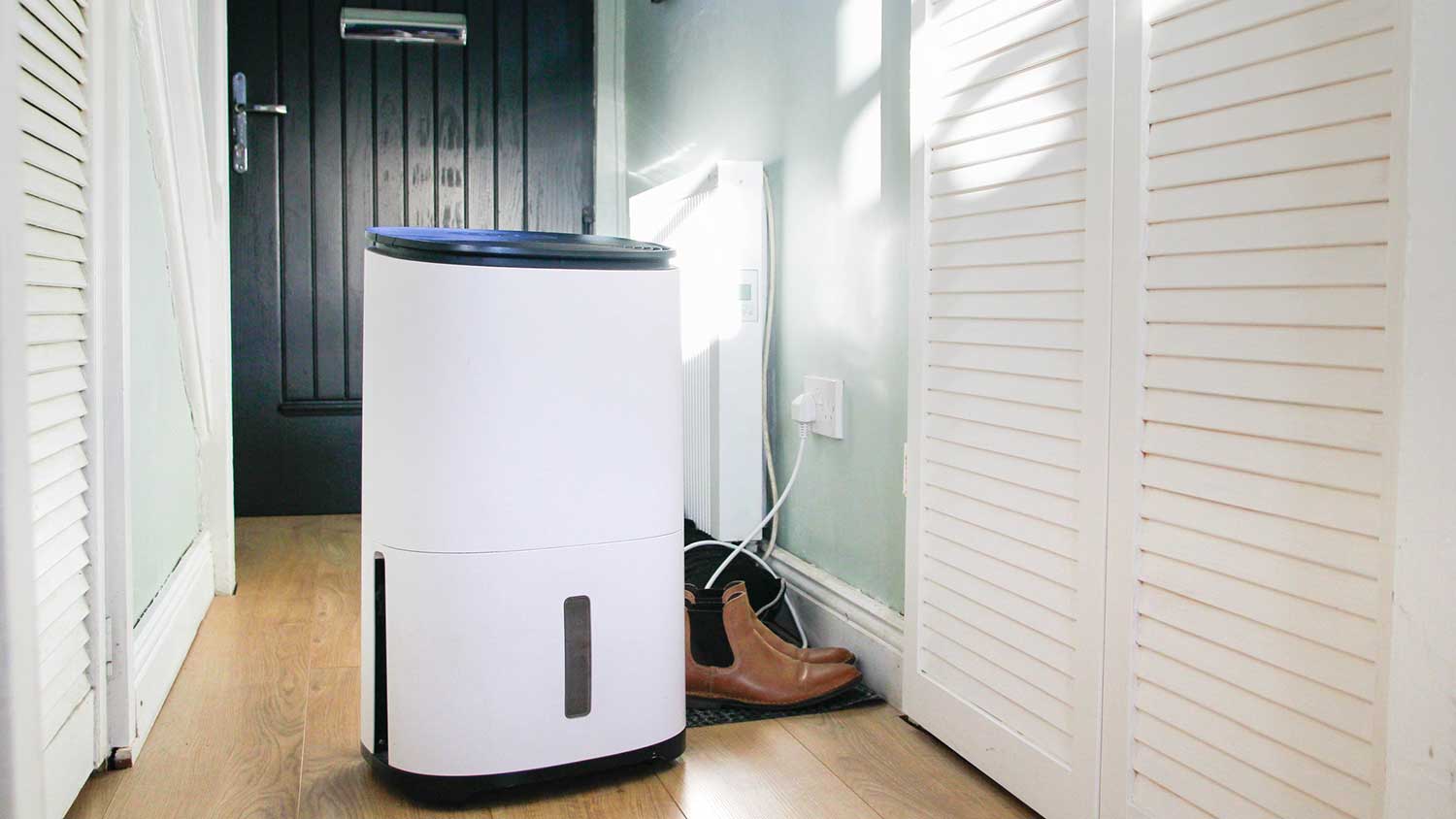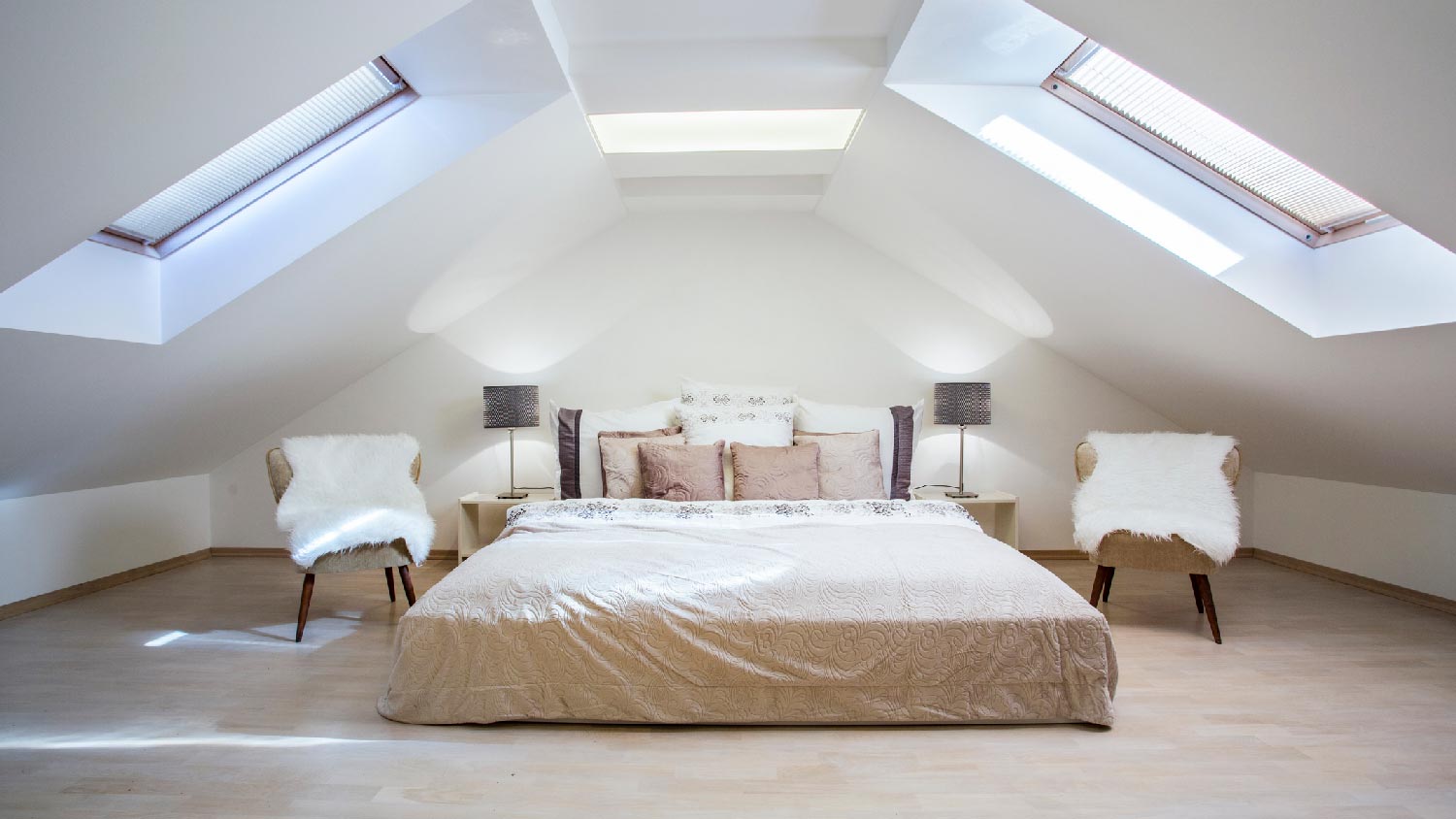Why Cold Air Is Blowing Out of Your Vents When the Heat Is On
Don’t let frosty air take over your home this winter


When the heat is on, your HVAC system should distribute warm air into your home.
If the air feels chilly, start by checking your thermostat settings.
Otherwise, you might need to replace your air filter or reignite your pilot light.
Don’t hesitate to call an HVAC expert if you can’t identify or solve the problem.
Let’s say it’s the middle of winter, and you’ve just noticed cold air blowing out of vents when the heat is on. Not only is this uncomfortable, but it can be downright dangerous, depending on the temperature outside. There are many reasons why this might happen, but no matter what, you’ll want to act quickly to correct the issue. Here are some of the most common reasons you feel chilly air when the heating is on, along with tips on what to do in each scenario.
How an HVAC System Heats Your Home
First, let’s run through a basic explanation of what’s supposed to happen when you turn on the heat in your house. When you crank up the temperature on your thermostat, it activates your home’s heat source (for example, a furnace, heat pump, or boiler), which produces heat, typically using gas, electricity, or oil.
From there, the heat is transferred into the air, and the heating source works with the other parts of your HVAC system to distribute the warm air through your house. Depending on the type of HVAC system you have, it might also include components like vents, ducts, or pipes.
Common Causes of Cold Air Coming Out of Vents
There are a few common culprits behind an issue like this, from a haywire thermostat to blocked vents. Here are some possible reasons why cold air is coming out of your return vent.
Thermostat Issues
It may sound silly, but checking your thermostat is the first step when troubleshooting this HVAC issue. Maybe you mistakenly adjusted the temperature while cleaning it. Accidentally leaving your thermostat set to "cool" or setting the fan to "on" can cause cold air to come out instead of hot air. It also could have run out of batteries.
Either way, the solution here is simple. Head over to your thermostat, make sure it has plenty of battery, and verify that the heating function is on.
Clogged Air Filter

Dirty air filters are another common cause of many HVAC problems—including blowing cold air when the heat is on. That’s because blocked filters can restrict airflow within your HVAC system, causing your furnace or heat pump to stop working properly. Clogged air filters can also drive up your energy bill and potentially damage your HVAC system, which could require costly repairs.
As a rule of thumb, you should check your filter every one to three months and replace it at least quarterly. However, you might need to change your filter more often if you use thinner filters (1 to 2 inches in thickness), have pets, or suffer from allergies.
Blocked Vents
A blocked vent won’t necessarily cause cold air to come out, but it will prevent hot air from circulating in. Vents can be blocked by a number of things, from blockages within the ductwork to furniture in or outside of your home.
Take care to remove any obstructions from in front of both interior and exterior facing vents if you think a blocked vent could be your problem. Resolving blockages in ductwork is a bit more tricky, as it’s best to hire a pro for potentially hazardous work like this.
If your house isn't cooling down or heating up like it used to, before calling in a pro for air duct maintenance, make sure all your vents and return vents are open and unobstructed.
Furnace Issues That Create Cold Air
Problems with a furnace are another reason why your HVAC system may be acting up. But in order to fix it, you need to know which part isn’t performing as it should, whether that be the pilot light, limit switch, or flame sensor.
Malfunctioning Pilot Light
In older gas furnaces, a pilot light serves as the ignition source for the burners, which, in turn, helps create heat to warm up your home. The pilot light should stay lit while your furnace is on (and even when it’s set to off), but sometimes, it can go out—usually due to a gust of wind, a buildup of dirt inside the furnace, or malfunctioning equipment. Either way, without a pilot light, your furnace can’t ignite the gas and, therefore, won’t run.
When this happens, you can relight the pilot light yourself or call a pro to do it. It’s a fairly simple DIY job, but you’ll need to follow all safety guidelines carefully since you’ll be working with fire and natural gas. If your pilot light keeps going out, call in a pro to figure out why.
Old or Dirty Flame Sensor

The flame sensor is another important component in a gas furnace because it detects whether or not the pilot light is lit. When it’s working properly, the sensor will direct the furnace to keep burning gas and heating your home.
However, if it doesn’t detect a flame, the sensor will shut down the furnace burners and stop heating your home. Over time, the sensor can wear down and get dirty. As a result, it may malfunction and turn off your furnace—even if a flame is still burning.
You can clean a dirty flame sensor yourself as part of your regular furnace maintenance. If that doesn’t work, contact an HVAC pro to take a look at your system and replace the sensor if needed.
Faulty Limit Switch
Your gas furnace relies on a limit switch to turn the blower fan on and off. When the air inside your furnace reaches the correct temperature, the limit switch tells the blower fan to start sending that toasty air into your home. However, if the air is too hot, the limit switch will turn off the blower to prevent overheating.
If your limit switch stops working correctly, it might not be able to tell your blower fan when to shut down. Because of this, the blower may continue pushing air through your house—even if that air hasn’t been warmed by the burners.
Chances are, you won’t be able to diagnose a malfunctioning limit switch on your own. If you’ve tried the solutions above and you’re still noticing cold air coming from vents when heat is on, your best bet is to contact a local HVAC company. Even if there’s only one vent blowing cold air when heat is on, you might still get peace of mind from having an expert look at your system.
Heat Pump Problems That Produce Cold Air
Those with heat pumps instead of furnaces can also experience cold air blowing in when it shouldn’t. Some reasons for this could be that your heat pump is in defrost mode, there’s a faulty reverse valve, or you have a refrigerant leak.
It’s In Defrost Mode
The main unit of a heat pump is located outside, and when the weather gets especially cold and icy, so, too does the pump. When the machine drops below freezing, it can’t do its job properly. In order to keep functioning as it should, such instances cause it to enter defrost mode automatically.
During defrost, the pump pulls hot air from inside to warm up the exterior coils. In some cases, it even causes cold air to circulate into your home. But normally, this is only temporary and nothing to worry about. If your pump doesn’t resume regular function within an hour or two, there might be another issue at play.
Faulty Reverse Valve
Reverse valves are responsible for informing your unit when it’s time to blow hot or cold air. If it’s stuck or otherwise compromised, it may send the wrong message at the wrong moment.
There are a few reasons this might happen: Either the connection between the thermostat and reverse valve is damaged, or the solenoid (a type of coil) has locked it into one position. In either case, it’s best to get a pro in ASAP to see what’s going on and make the necessary fixes.
Refrigerant Leak
Despite the association between refrigerant and cool temps, this substance produces both hot and cold air. Without it, your unit won’t be able to warm up your home, and when you turn it on, you’ll likely feel cold air being ushered in from outside instead.
Before replacing the lost refrigerant, it’s important to patch up any and all leaks so you don’t end up with the same problem. Since refrigerants can be toxic, it’s best to hire a professional who will know exactly how much new refrigerant your machine needs and how to patch any leaks.
DIY vs. Hiring a Pro to Troubleshoot Temperature Issues
In this guide, we’ve listed the potential problems and solutions in order from most to least DIY-friendly. In other words, while you can easily check your thermostat settings and replace an air filter yourself, you should defer to an expert to help with a faulty flame sensor or broken limit switch.
The cost to fix HVAC problems varies greatly, depending on the specific issue you’re facing and whether or not you hire a local AC repair pro. For example, you can buy and install a new filter on your own for under $35, but you’ll pay between $150 and $250 for a pro to replace a flame sensor. If you need an entirely new furnace, your bill will be much higher, ranging from $2,820 to $6,810.





- Furnace Repair
- Air Conditioning Repair
- HVAC Repairs
- Furnace Installation
- Wood & Pellet Stove Repair
- Dehumidifier & Humidifier Repair
- Heat Pump Companies
- Swamp Cooler Repair
- Wood Stove Services
- HVAC Companies
- Commercial A/C Repair
- Geothermal Installation
- Air Conditioning Installation
- Boiler Repair
- 24 Hour Furnace Repair
- Geothermal Repair
- Heat Pump Repair
- Humidifier Installation
- Thermostat Repair
- Thermostat Installation
- Nest Installation
- Heating & Cooling
- Heating Repair
- Furnace Cleaning
- Furnace Tune-Up
- HVAC Technicians
- Subcontractors
- Furnace Maintenance
- Plumbing & Heating Companies
- Wood Stove Inspection
- Mini Split Installation
- Wall Heater Repair
- Duct Installers











